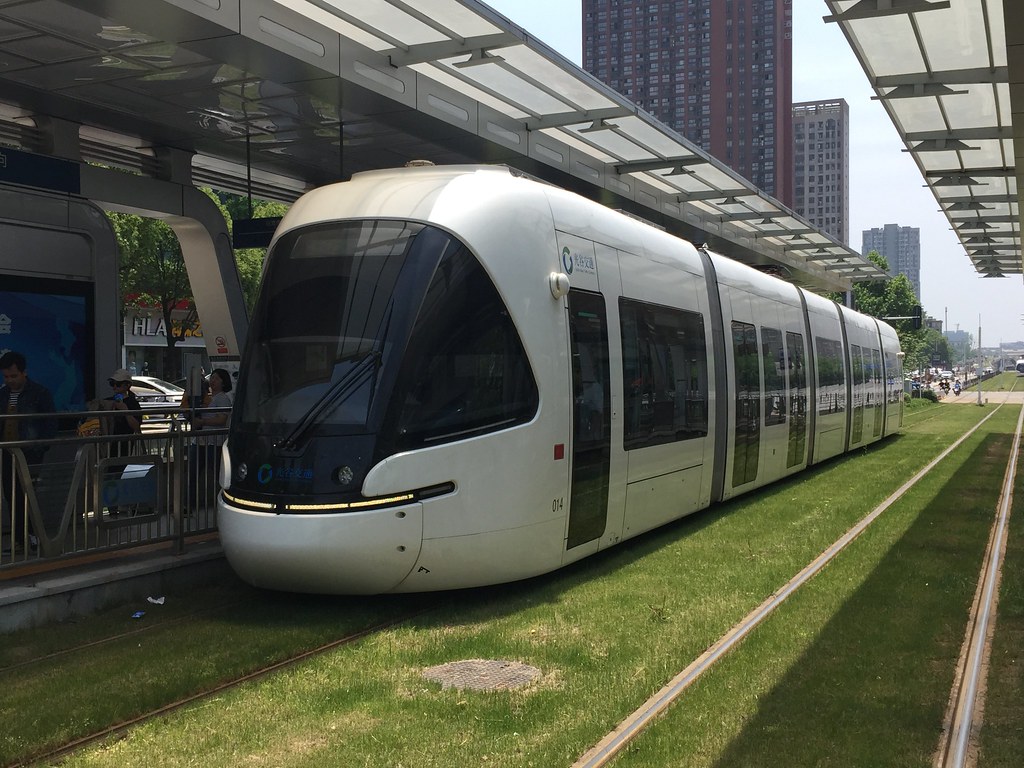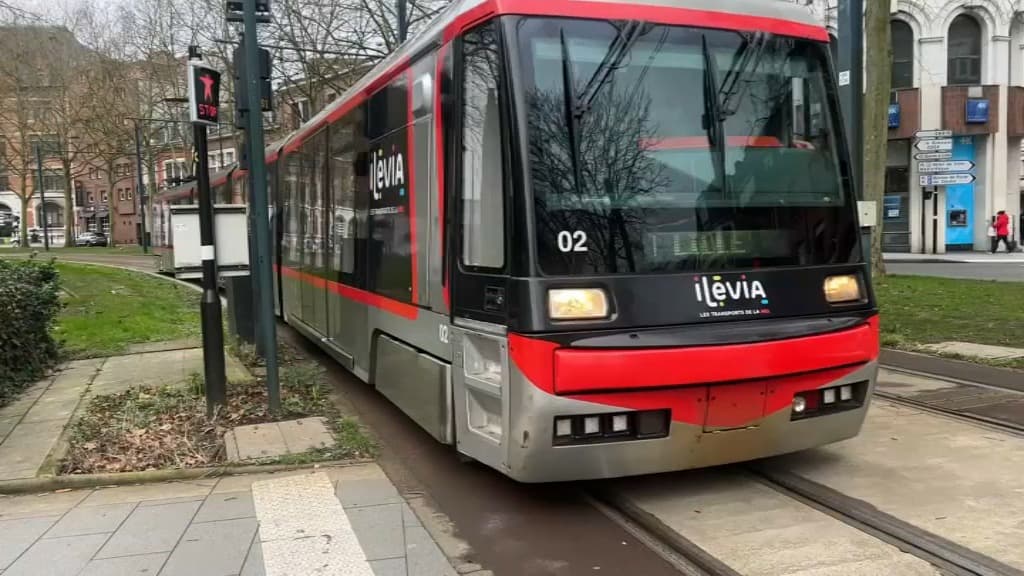YouTube Does Not, A Transit Expert, Make
I was sent a following link The Transit “Experts” That Derail Transit. (click here)
It is by a fairly well known YouTube type who has ‘taken the wrong tack’, but he has a large following.
It is obvious that the author has a preference for metros and a disdain for light rail and in fact much of his comments about light rail borders on myth and invention.
Metros, due to their cost, are only built on the heaviest used transit routes; transit routes with traffic flows in excess of 15,000 pphpd (North America) and 20,000 pphpd (Europe). Most major cities in Asia build with a metro and why is that?
Simple answer is that traffic flows, due to huge populations, demand a high capacity transit system and so densely packed are major cities, that grade separated transit is a must.
Yet, China has 23 and Japan has 21 tram/light rail systems.

The new light rail system in Wuhan China.
Because Metro is so expensive to build and operate (just ask German transit authorities) and (pre light rail) trams capacities were limited a new transit mode evolved, the light metro.
Light metro suffers from three major three problems: capacity, expensive operating and maintenance costs (those small cars needed to do two to three times the work as a standard metro car and the automatic train control needed constant, daily preventative maintenance) and the then emerging light rail (which provided the same operating characteristics of a light metro, at a cheaper cost).
Light metro was not the bargain it proponents expected it to be.
Around the time light metro was being marketed, the modern articulated tram made an appearance and to increase commercial speeds and capacities, the modern tram was operated on dedicated rights-of-ways. In Germany this was called Stadtbahn or city railway, it later became better known in North America as LRT.
In the 1980’s there was much competition between light metro and light rail and despite the many claims made for both modes, LRT became the clear winner because it had two very important factors in its favour; cost and flexibility.
LRT was much cheaper to build (up to 10 times cheaper to build according to the Toronto Transit Commission, ART and IBB studies) and it could easily integrate with in situ streetcar of tram tracks in city centres (OK, not Toronto due to different track gauges) Light metro, especially driverless light metro could not.
Now we travel to France, which was mentioned in the article, and see why light rail has such a foothold in the country.
France developed their own light metro system, VAL ( Véhicule Automatique Léger) and like all automatic light metros, was expensive to build and operate.

The major issue was VAL was produced by MATRA, then Frances largest military manufacturer. Sales of the VAL system was weak and the French government was afraid that lack of sales of VAL translated in a lack of confidence in MATRA’s weapon systems. To rectify this, the French government offered to fully fund construction for the first VAL Line in the city choosing VAL.
Sounds good doesn’t it!
Not so fast. French politcans tend to be more attuned to costs and taxes than most and soon questioned the future costs of extending the newly built VAL Lines.
VAL, like most light-metros was and still is extremely expensive to build.
Lille also operated a metre gauge tramway, which was going to be replaced by a future VAL extension, but the good Burghers of Lille and surrounding cities, did some sums and it was found to be far cheaper to completely rebuild the Lille, Raubaix and Tourcoing tramway, which they did and today the “Mongy” operates as a stark reminder that light rail is far cheaper to build and operate than the VAL system. This singular fact has spurred the French tramway revolution. In 1980 there were only four operating tramways in France and in 2025 there are now thirty.

Raubaix and Tourcoing tramway
What the author of the article ignores (on purpose?) is costs and funding issues for transit construction and continues to use “man of straw” arguments, such as speed, capacity and more seriously, mixing streetcar performance with light rail.

The graph is from Metrolinx comparing the 50 year costs of various transit modes.
Experts know this, most amateurs do not.
Transit authorities do not just ‘magic’ a light metro or metro into operation. Transit authorities have to secure funding for both construction and operation and light metro systems tend to be money-pits. Just look at Metro Vancouver’s 16km Expo Line extension to Langley, originally a $1.63 billion light rail project has now grown to a now over $7 billion SkyTrain project! Operational costs have also risen to now almost $50 million annually!
Definitely not “chump change”.
If ridership on a transit route does not meet the traffic flows needed for a heavy-rail metro, then light rail is the next best choice and this seems to make may people uncomfortable and the “metro lobby” apoplectic as TransLink’s “Mayor’s Council on Transit” are now finding out.




Opinions are like noses or a******s, everybody has one. If someone likes LRT, Meteos, Light Metros, BRT,gondolas or PRT and has a visible intellectual preference for it that’s ok, as far as I’m concerned. What becomes dangerous is when an entire city or urban area has a preference for one type of rapid transit mode at the expense of everything else. I like LRT but it won’t work in every condition. The Greater Golden Horseshoe Region (centred on Toronto), Ottawa, and others learned the hard way that focusing on nothing but a particular mode of rapid transit, at the expense of every other rapid transit mode, is a short sighted and costly mistake.
As a planner I sometimes smile at the so called transit experts on-line, realizing they have never had to go in front of an actual city or regional council which has more than just transit to worry about, make a proposal and soberly say to everyone listening, “no this $5 – $10 Billion _______ (insert your favorite rapid transit mode) line, is a great idea! Yes, $5 – $10 Billion is a game changer for public housing or any other department in the City, but no you should spend it all on rail transit instead.” It takes a lot of bravery to claim you need that much and you should get it all and screw everyone else.
The actual dollar cost becomes irrelevant and it becomes the old how much is too much to pay argument. These so called transit experts don’t understand this. They also don’t get that whether or not you like it, 1km of metro buys a whole lot more LRT and BRT! I just leaned in Ottawa that 1 km of metro tunnel buys over 550 very large multi-bedroom luxury condo units or in his case, over 680 family 3 bedroom apartments. That is a lot of opportunity lost cost.
There is only one taxpayer and so many items that our taxes must pay for.
The good folks on Vancouver island, who want to restore the E&N Railways, do not understand how a $16 billion (and rising) SkyTrain extensions are affecting their abilities to secure funding for their project. The mindset just will not allow this train of thought.